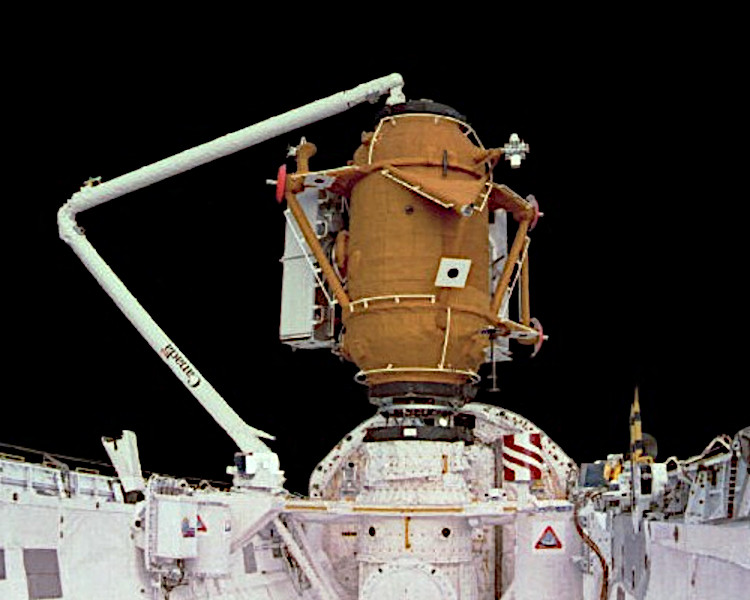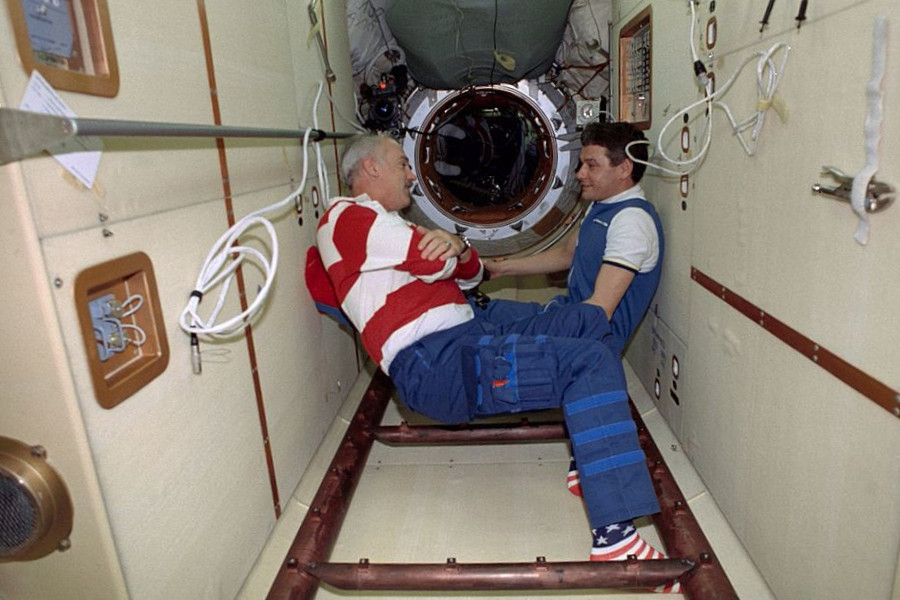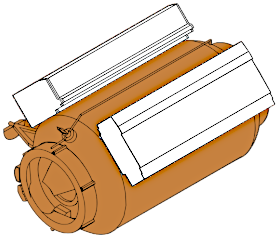
The Docking Module is connected to the nadir (bottom) port of the Kristall Module.


The Docking Module is connected to the nadir (bottom) port of the Kristall Module.

The Docking Module, also called Stykovochnyy Otsek (Docking compartment), was the sixth major component installed on Mir.

Built by RKK Energia, it was designed to help simplify space shuttle docking with Mir during the Shuttle-Mir programme.
Adding the Docking Module to Kristall provided the clearance the shuttles needed to dock. This removed the need for the periodic relocation of the Kristall module to allow room for a shuttle.
The Docking Module was used as a mounting point for external experiments and as a storage module when not in use for docking spacecraft. It was also used to transport two photovoltaic arrays to Mir. These were contained in boxes attached to the outside of the module.

Launch date: 12 November 1995
Launch vehicle: Space Shuttle STS-74
Docked: 15 November 1995
Re-entry: 23 March 2001
Mass: 4.3 metric tonnes
Length: 4.7 metres
Diameter: 2.9 metres
Co-operative Solar Array
- Area: 42 m²
- Power: 6.7 kW
The Docking Module originated in the 1992 design version of the cancelled Mir-2 space station. It featured a combined docking compartment and airlock to facilitate docking missions during the Soviet Buran space shuttle programme.
The Docking Module consisted of basically two Soyuz TM-16 type orbital modules cut in half, with a cylindrical central portion mounted in the center of the two halves. Only the halves which incorporated docking apparatus were used. An APAS-89 docking port was then mounted on each end.
It was also provided with its own thermal control, television transmission, and telemetry systems. Mounting points were also provided for external experiments.

Two boxes containing new solar arrays, shown in white on drawing, were delivered attached to the Docking Module. These were later installed on the Kvant-1 module.
The first, the Mir Co-operative Solar Array, was jointly designed by NASA and Russia in order to test designs for the future International Space Station.
The second array was the Russian-built MSB array which replaced the Kristall array originally on Kvant-1.
The Docking Module was also used as a mounting point for the Mir Environmental Effects Payload (MEEP).
This set of four experiments studied the effects of space debris impacts and exposure to the space environment on a variety of materials. These materials were being considered for use on the ISS, and provided an assessment of them in a similar space environment to the ISS.
MEEP also examined the occurrence and effects of man-made debris and natural micrometeoroids through capture and impact studies.
